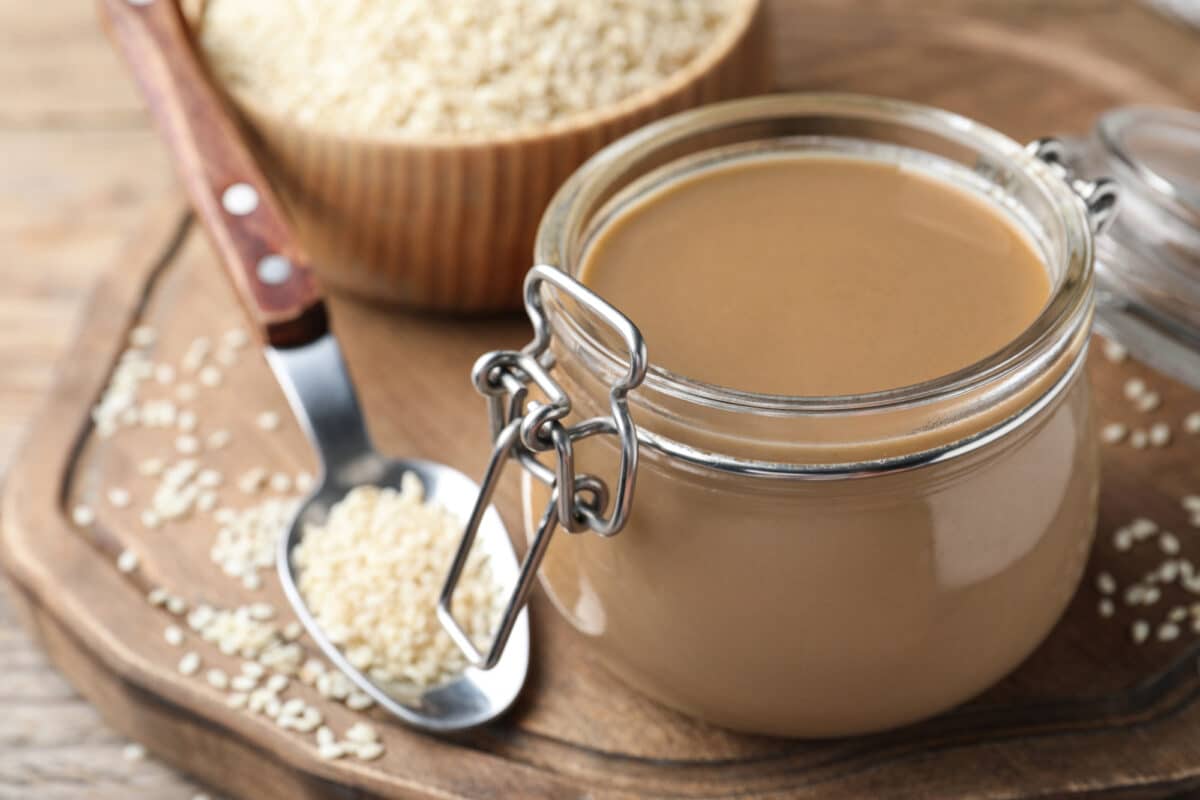Tahini is a paste made from ground sesame seeds.
The word “tahini” comes from the Arabic “ṭaḥīnīa,” which means “to grind,” reflecting the process of its creation. It is a fundamental ingredient in many dishes across the Middle East and Mediterranean regions, and its popularity has spread globally.
Tahini is typically made by hulled sesame seeds, which are toasted and then ground into a smooth, creamy paste. It can be seasoned with salt, but often it is used in its pure form to add depth and richness to a variety of dishes. Tahini is a key component in hummus, baba ghanoush, and halva, and it can also be used as a base for dressings, sauces, and dips.
The flavor is nutty and earthy, with a slight bitterness that can vary depending on the sesame seeds’ origin and the preparation process. There are also variations in tahini based on the region, such as hulled or unhulled sesame seeds being used, which affects the flavor and texture.
Tahini is also prized for its nutritional benefits, being a good source of healthy fats, vitamins, and minerals, including calcium, magnesium, iron, and antioxidants.
It can be purchased at supermarkets and grocery stores, where it’s often stocked in the international foods aisle. Specialty stores that focus on health foods or organic products also carry tahini, catering to consumers looking for nutritional spreads or ingredients with health benefits. Asian markets may offer tahini as well, given its use in fusion and contemporary Asian dishes.
For those with a preference for shopping at smaller, specialty shops, Middle Eastern grocers are ideal for finding authentic tahini. Farmers’ markets occasionally feature local producers of tahini, especially in areas with a vibrant culinary scene or a focus on artisanal foods.
Online shopping platforms and specialty food websites are convenient options for buying tahini, providing access to a variety of brands and formulations. This is particularly useful for consumers in regions where tahini is not readily available in local stores, or for those seeking organic, non-GMO, or specialty blends.
When selecting tahini, shoppers may encounter both hulled and unhulled varieties, with the choice depending on personal preference for texture and nutritional content. Hulled tahini, made from sesame seeds with the outer husk removed, offers a smoother paste and milder taste, while unhulled tahini, made from whole sesame seeds, has a richer flavor and higher nutritional value due to the intact seed husk.

